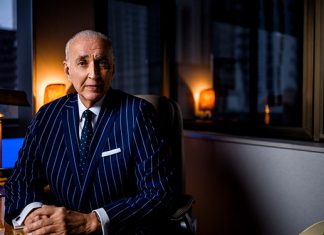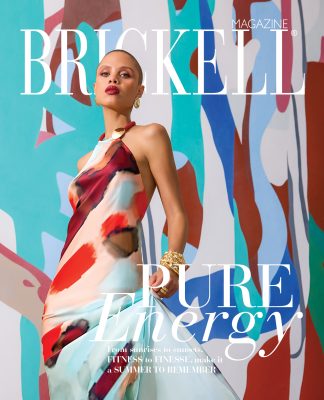 We all frame ourselves in different ways, and these chapters add up to the story of our life. For example, you may be “the smart one,” “the artsy one,” or “the pretty one.” We define ourselves with these stories, and whatever your story is, it tends to come true because you believe it. A story can set you up for success or condemn you to failure before you even start.
We all frame ourselves in different ways, and these chapters add up to the story of our life. For example, you may be “the smart one,” “the artsy one,” or “the pretty one.” We define ourselves with these stories, and whatever your story is, it tends to come true because you believe it. A story can set you up for success or condemn you to failure before you even start.
One popular story is “I can’t do math.” This story shapes educational studies, career paths and opportunities. Because someone tells themselves they stink at math, they may avoid expanding their tech skills or considering any job that’s too numbers-oriented. Their story makes it hard for them to see themselves as anything other than what they perceive.
Clearly, a story has the power to shape paths and limit future opportunities, unless it is rewritten. But how did the story get started in the first place? “Most stories start when we’re very young,” says California-based Life Coach Emily Boorstein. “We make it up based on limited information we get from the outside world — it’s how our brain works.”
To make sense of the world, our brain synthesizes the enormous amount of information we receive into these simplistic stories. “Stories are based on beliefs, and beliefs are a network of thoughts that are embedded in the brain in the form of neural patterns. So, on a neurological level, our stories are ‘wired’ into the brain,” says Miami-based Wellness Expert Gabrielle Pelicci, Ph.D.
 What’s more, most of the stories about ourselves are formed during childhood. If you were sent the message that you were stupid, unattractive or not athletic, you likely unconsciously took it in and made it your truth. “Oftentimes, we’re acting out scripts written by other people,” says Kim Schneiderman, Author of Step Out Of Your Story. “Usually, these scripts don’t reflect who you are — it’s as if you’ve been miscast in the story of your own life.”
What’s more, most of the stories about ourselves are formed during childhood. If you were sent the message that you were stupid, unattractive or not athletic, you likely unconsciously took it in and made it your truth. “Oftentimes, we’re acting out scripts written by other people,” says Kim Schneiderman, Author of Step Out Of Your Story. “Usually, these scripts don’t reflect who you are — it’s as if you’ve been miscast in the story of your own life.”
 Once we have a belief about ourselves, our nature is to find evidence that continues to reinforce the story. For example, someone might hold up the “D” they got in geometry and their ACT math score as “proof” that they’re not mathematically inclined, while ignoring the fact that there were once in charge of accounting for a small business. We may grow and change as people, but our stories don’t seem to evolve with us. This is why a beautiful, thin woman looks in the mirror and still sees the fat teenager who got teased at school.
Once we have a belief about ourselves, our nature is to find evidence that continues to reinforce the story. For example, someone might hold up the “D” they got in geometry and their ACT math score as “proof” that they’re not mathematically inclined, while ignoring the fact that there were once in charge of accounting for a small business. We may grow and change as people, but our stories don’t seem to evolve with us. This is why a beautiful, thin woman looks in the mirror and still sees the fat teenager who got teased at school.
“The clients I work with who make the slowest progress carry limiting beliefs from childhood. Every time I hear ‘I can´t do this’ or ‘I´m not the type of person who is good at this’…I cringe to myself because I’m not working with the person sitting in front of me, I´m working with an amalgamation of negative voices accumulated over a lifetime,” says Zan Hogan, a coach with HappyAlley. “These voices sabotage all of our great work, and quite often the tipping point between failure and getting what you desire results from believing you can have it all.”
“Oftentimes, we’re acting out scripts written by other people,” says Kim Schneiderman, Author of Step Out Of Your Story. “Usually, these scripts don’t reflect who you are — it’s as if you’ve been miscast in the story of your own life.”
So how can we go about rewriting our negative stories? The first thing we need to do is to figure out what limiting beliefs we carry around. Author Byron Katie suggests asking a few important questions about any belief: First, is it true? Secondly, do you absolutely know that it’s true 100% of the time? How do you react and what happens when you believe your thought? Finally, who would you think you would be without that belief?
What most people realize is that it’s pretty easy to poke holes in their stories when they shift their mindset to prove it false rather than true. For instance, if you believe you aren’t smart enough, you look for clear evidence of times when that was not true and then remind yourself of those times on a daily basis. “You need to build up a case against your inner critic,” advises Pelicci. “You have to feed and grow the new story.” Because your old story had years to gain a stronghold in your mind, it will take some time for you to believe your new one. However, according to Pelicci, your daily affirmation should provide you with an instant sense of relief and you should see a significant shift within 90 days.
 Not only can a new story initially be challenging for us to internalize into a new belief, it can also be hard to get others to see you in a new light. If you’ve always positioned yourself as the “doormat” and suddenly start enforcing boundaries, you can expect you’re going to get some pushback; or if you always said you weren’t athletic and then tell people you are going to run a marathon, they’ll likely tell you a thousands reasons why you can’t. This is why it’s easier to reinvent ourselves when we move or take an extended trip. However, simply finding a new group of people aligned with your new image can also do the trick. If you join a runner’s group, everyone else sees you as a fellow athlete because they don’t know your old story.
Not only can a new story initially be challenging for us to internalize into a new belief, it can also be hard to get others to see you in a new light. If you’ve always positioned yourself as the “doormat” and suddenly start enforcing boundaries, you can expect you’re going to get some pushback; or if you always said you weren’t athletic and then tell people you are going to run a marathon, they’ll likely tell you a thousands reasons why you can’t. This is why it’s easier to reinvent ourselves when we move or take an extended trip. However, simply finding a new group of people aligned with your new image can also do the trick. If you join a runner’s group, everyone else sees you as a fellow athlete because they don’t know your old story.
Writing new scripts for our lives is an exercise in being mindful and present. It requires the ability to recognize that our inner critic is rooted in the past, but we’re living in the present. We all create our own realities based on how we choose to view an experience. The trick is to be able to see ourselves as we are today to shape a more positive future. “Once we decide to no longer believe the old story, the future is limitless,” says Author Barb Schmidt, who penned The Practice. “When you do that, you can look at today and decide what kind of story you want to write.”











